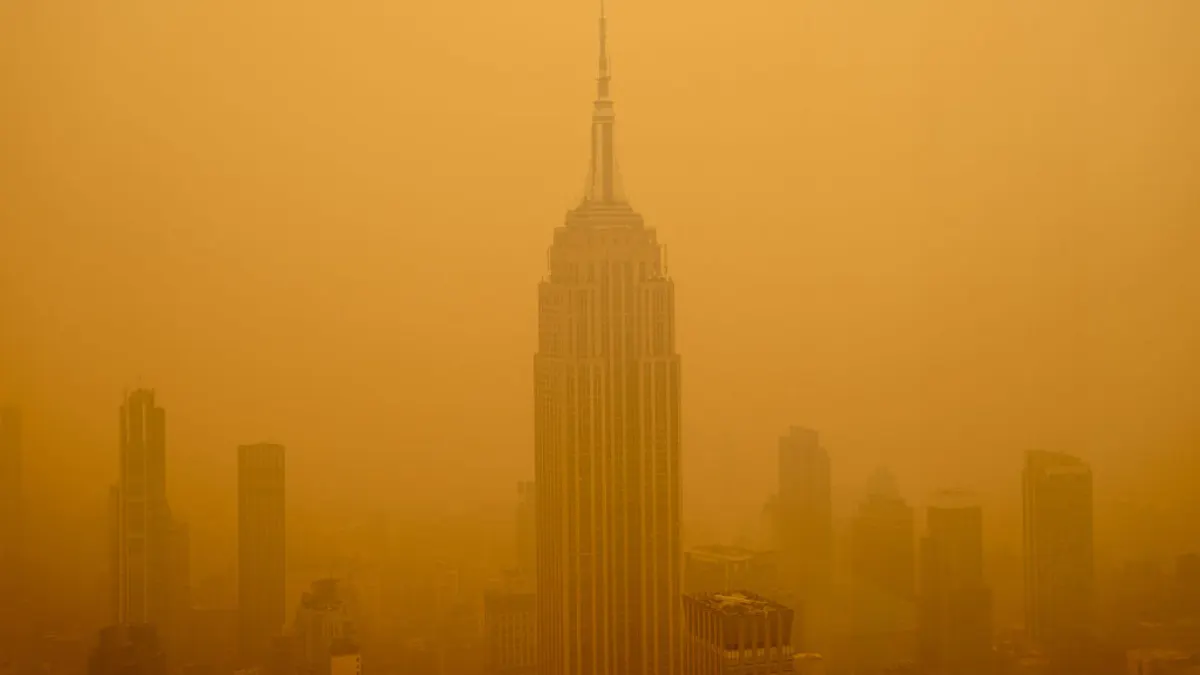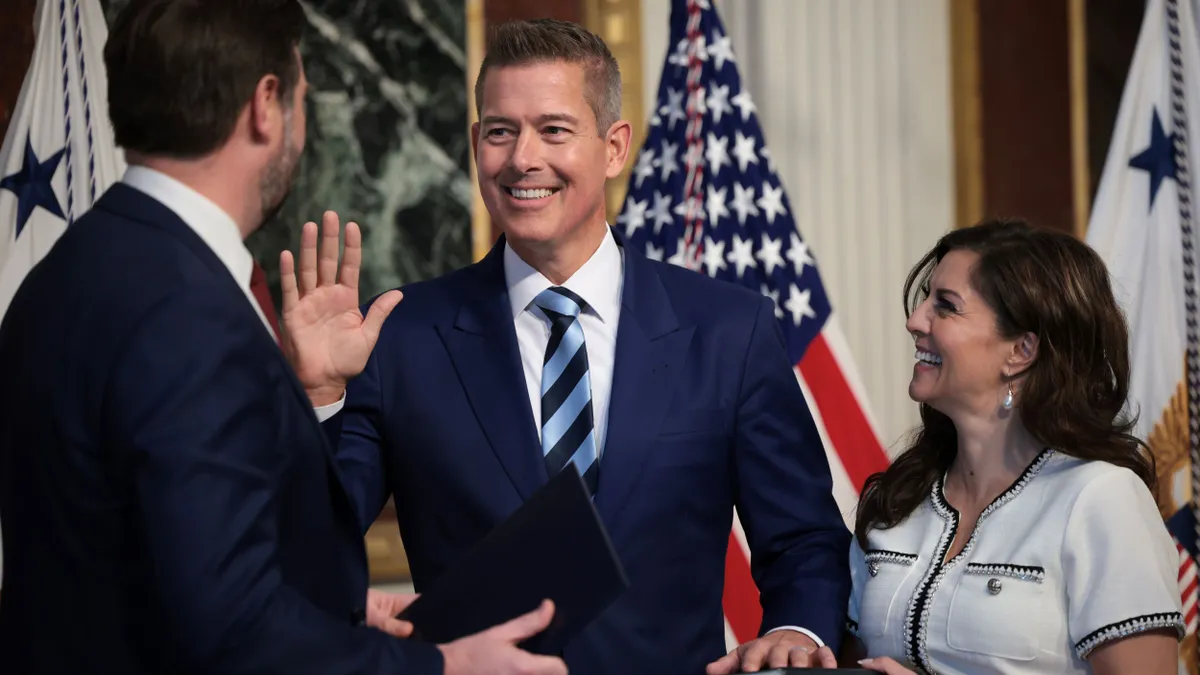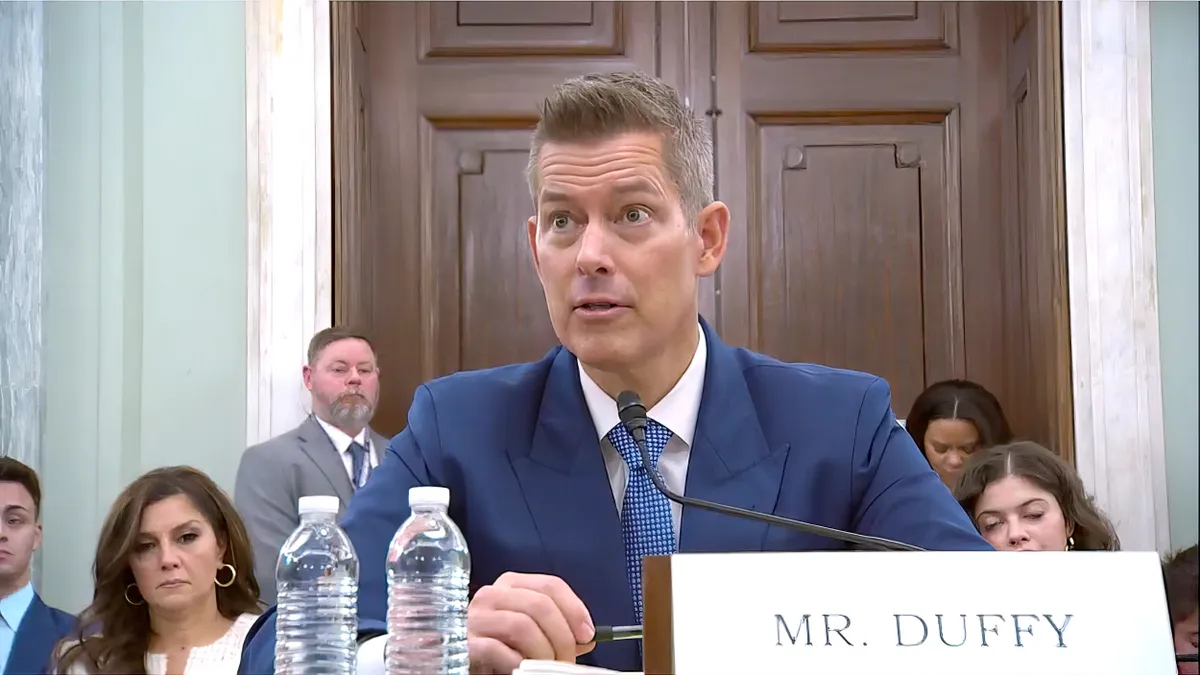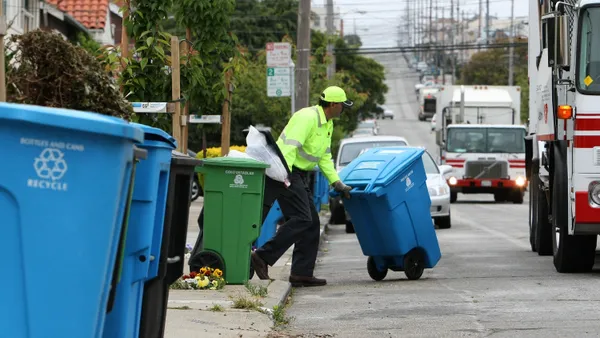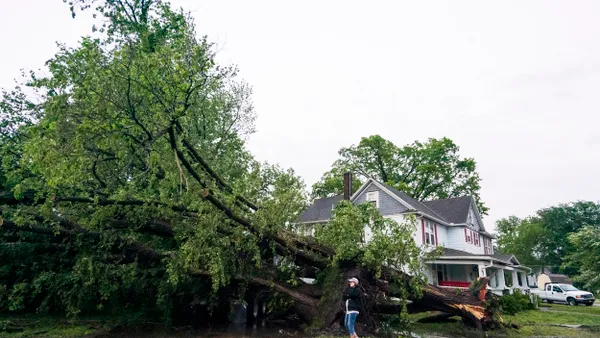Dive Brief:
- Nearly half of the U.S. population breathes unhealthy levels of air pollution, according to the American Lung Association’s 2025 “State of the Air” report, released today.
- More than 77 million people live in counties that had unhealthy spikes in particle pollution — a 16-year high, according to the report, which is based on 2021-2023 data. The U.S. experienced more days of unhealthy or very unhealthy particle pollution levels than ever before, and more than a third of U.S. residents live in areas with unhealthy ozone pollution, it states.
- American Lung Association officials urged local government leaders to speak up against staff and funding cuts at the Environmental Protection Agency, which has been a source of air quality information and education, it said.
Dive Insight:
The “State of the Air” report graded residents’ exposure to unhealthy levels of ground-level ozone, spikes in particle pollution and year-round particle pollution from 2021 through 2023. Also known as particulate matter, particle pollution such as dust, dirt, soot or smoke can cause serious health problems.
The report found that 42.5 million people live in areas with failing grades for all three measures. People of color are more than twice as likely as White residents to live in communities with failing grades on all three pollution measures, the report states, and Hispanic residents are nearly three times as likely.
Wildfires and extreme heat, when combined with emissions, led to some communities experiencing the worst ozone levels they’ve seen in years, according to the report. Southern California’s Los Angeles-Long Beach area and the cities of Visalia and Bakersfield in the state’s San Joaquin Valley experienced the country’s highest ozone levels. The Bakersfield-Delano area endured the highest levels of short-term and year-round particle pollution. Short-term particle pollution improved slightly in Western states but worsened in the Midwest and Northeast.
“We’ve seen air quality impacts on the eastern side of the country from Western wildfires before, but this was the first time many people [in the eastern U.S.] experienced what it’s like to wake up and not be able to see the skyline,” Liz Scott, director of federal clean air advocacy for the American Lung Association, said in an interview.
Only two cities — Bangor, Maine, and San Juan, Puerto Rico — made the report’s “cleanest” list for all three measures, experiencing no high ozone or short-term particle pollution days and ranking among the 25 cities with the lowest year-round particle pollution levels. This is down from five cities in last year’s report.
“We are seeing, in this report in particular, a bit of a backslide in some areas,” Scott said.
Data for the report is collected from air quality monitors managed by state, local and tribal air pollution control authorities. Scott said only about one-third of U.S. counties are able to monitor for pollutants, which she attributed to insufficient federal funding for the Environmental Protection Agency and underinvestment in air quality monitors. “There are still some glaring examples of places where people are still waiting for the promise of the Clean Air Act,” she said.
The Trump administration has targeted the EPA for budget cuts of up to 65%. EPA Administrator Lee Zeldin has canceled at least $1.7 billion in grants across nine programs, according to a March 10 press release.
Scott called on city leaders to “double down on calls to action to protect the EPA.” City leaders should “go on record demanding the EPA’s core mission — to protect health and the environment by providing clean air for all — be funded and enforced,” Scott said.
Harold Wimmer, president and CEO of the American Lung Association, said in a statement that “efforts to slash staff, funding and programs at EPA are leaving families even more vulnerable to harmful air pollution.”


